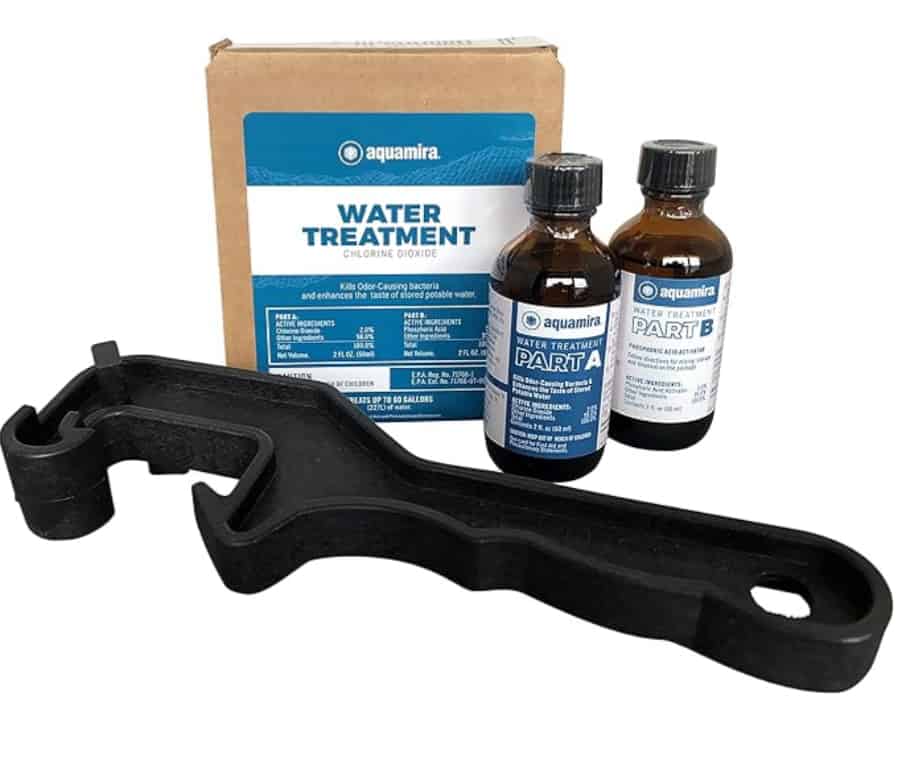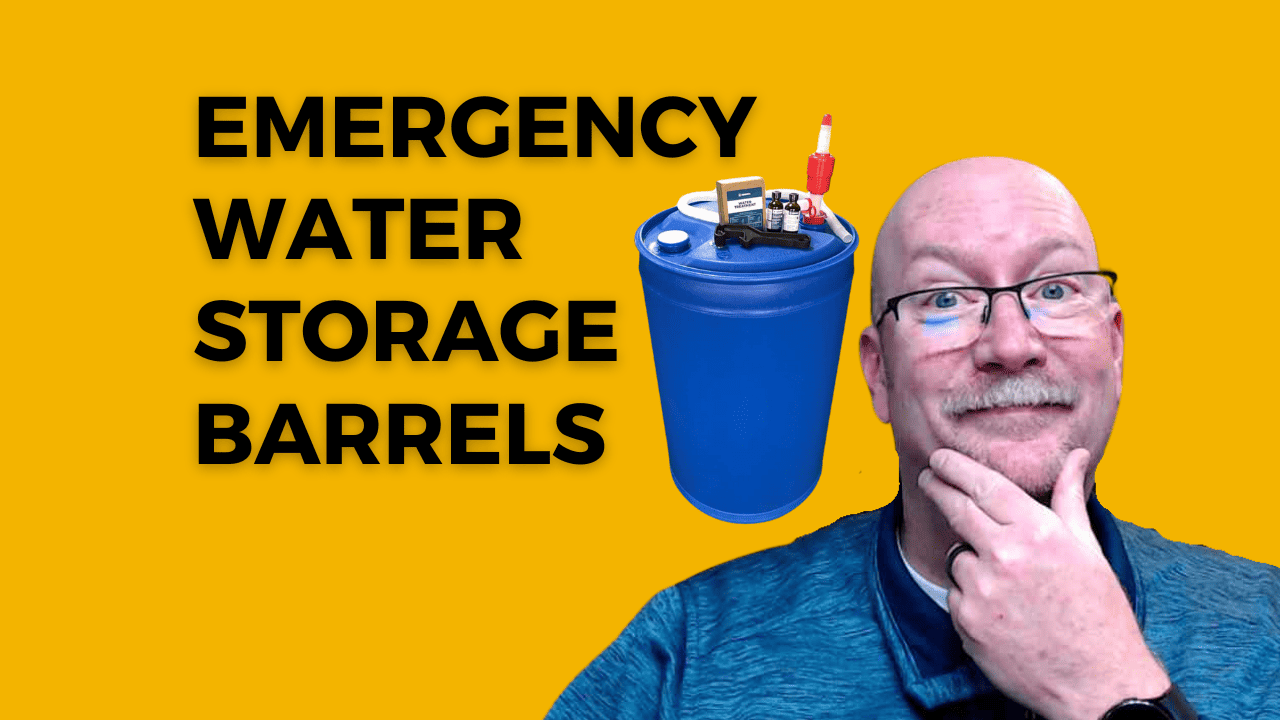If you’ve ever faced a natural disaster or local emergency, you know how quickly the things we take for granted can become scarce. Water tops that list. It’s not just about slaking thirst; it’s also about maintaining hygiene and the ability to cook. An uncomfortable truth is that in emergencies, a reliable water supply can mean the difference between resilience and catastrophe.
Table of Contents
- Unboxing the Augason Farms Water Storage System
- Best Practices for Storing Water Safely and Efficiently
Now, let’s consider the Augason Farms 55-gallon emergency storage water barrels, a standout choice for tackling the water storage challenge. This isn’t just a container; it’s a well-thought-out system designed to ensure your family has access to safe, potable water when you most need it. Constructed from BPA-free, food-grade Polyethylene, it’s a durable solution that prioritizes your health and safety.

When evaluating your emergency preparedness, water quantity is paramount. I’m going to break it down for you: each person requires a minimum of one gallon of water per day. This includes two quarts for drinking and two quarts for other uses, like cooking and staying clean. Picture a family of four during a 72-hour emergency – you’re going to need roughly 48 gallons; that’s where the Augason Farms water drum’s capacity is a perfect match.
And that’s just scratching the surface. In the next section, you’re going to find out about the essential accessories included with the Augason Farms water storage system, making water usage in emergencies practical and straightforward. Ensuring you’re equipped with the right tools and information for efficient water access is crucial. Continue reading to dive into how those components work together to keep your water supply readily available and untainted.
Unboxing the Augason Farms Water Storage System
Now, let’s take a closer look at what you get with the Augason Farms 55-gallon water drum. This isn’t just a standalone barrel; it’s a comprehensive system designed to ensure you have access to safe water when you need it most.
Included in your water storage kit are some pivotal accessories. First up, we have a hand siphon pump and a six-foot siphon hose. This duo is indispensable when it comes to getting water out of the barrel. I’m here to tell you that you don’t want to be in an emergency situation without a reliable means for water extraction—it’s like having a car with no keys.
Also crucial is the pail and bucket lid opener, which some might know as a bung wrench or drum bung wrench. This tool is a game-changer, as it enables you to open your water drums and food storage pails without damaging the lids. And trust me, in an emergency, the last thing you want is to struggle with lids when hydration is at stake.

What’s particularly impressive about this kit is the inclusion of Aquamira Water Treatment drops. Guess what? They are compact enough to slip into your pocket, yet powerful enough to treat up to 60 gallons of water. Complying with stringent EPA guidelines, these drops will neutralize bacteria, viruses, and cysts without leaving you with a bad taste in your mouth (literally). Even after opening, the four-year shelf life stands strong, ensuring that you’re prepared for the long haul.
With these tools at the ready, I truly hope that you’ll find peace of mind knowing you’re well-equipped to handle water needs in any unforeseen circumstances. Having the proper equipment is crucial, but how you store your water also plays a key role in emergency preparedness. That’s what we’re going to explore next.
Best Practices for Storing Water Safely and Efficiently
When you’ve decided to secure your family’s water needs with the Augason Farms 55-gallon water drum, there’s more to consider than just making the purchase. Storing your emergency water correctly is equally imperative to ensure its usability when the need arises. Keep your water barrels away from direct sunlight and off directly from cement surfaces to prevent any chemical interactions or degradation of the container that could compromise the water quality.
Moreover, avoid letting the contents freeze, as this can cause expansion and potentially damage your barrel. In terms of organization, a rule of thumb is to never stack more than two barrels high. This safeguards against the risk of toppling over and injury or loss of your precious reserves.
You might be wondering about the shelf life of water. With proper storage, your emergency water supply can remain safe for extended periods. Nevertheless, it’s a sound practice to rotate your stock, replacing the water every 6-12 months, to ensure freshness. And remember, in situations where water supplies might be tainted, whether from floodwaters or other contaminants, the Aquamira Water Treatment kits can be a lifesaver, making questionable water safe to drink.
To be fully prepared, consider conducting regular checks on your storage setup. Verify the integrity of the barrels and the effectiveness of the storage location. This proactive approach not only gives peace of mind but also bolsters the readiness of your household to face various emergency scenarios that may disrupt your access to clean water.
In conclusion, the key to effective emergency water storage isn’t just about having enough—it’s also about how and where you store it. By following these guidelines for storing water barrels, incorporating necessary treatments, and monitoring your water supplies, you are not leaving your most critical emergency resource to chance. You’re ensuring that clean, potable water will be there when you and your loved ones need it the most.
And don’t forget to check out this article I wrote about Emergency Food Storage…


Thank you so much for your information in this article about the Auguson Farms’ emergency water storage barrels and the best way to store them. I am familiar with the Auguson Farms brand as we have some of their products in case of an emergency while on the road in our 5th wheel. However, I honestly wish I had known about this particular product and kit earlier than now. Many times over the years (prior to becoming full-time rv’ers) we lost power for days at a time and had no water since our well pump required power to provide the water to us. We did keep a supply of emergency water in a few 5 gallon containers, although it was not suitable for drinking. This product would have been so much better to have on hand for those emergency moments and I feel this is an invaluable item for almost everyone!
Scott, I’m glad you found value… Yeah, it sounds like knowing about these earlier would have definitely helped you on your road trips.